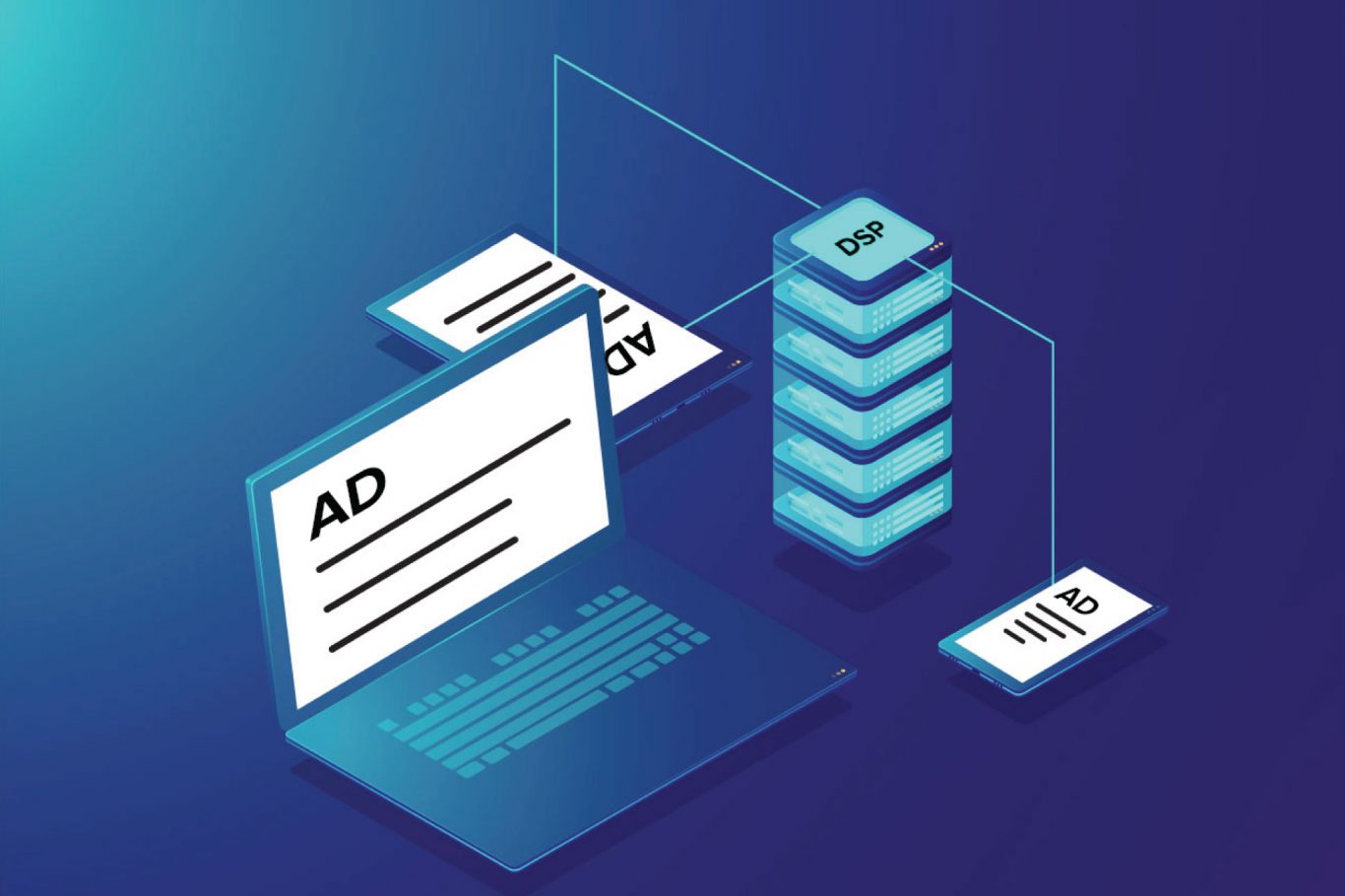
Back in the day, when advertisers and publishers traded directly on the market, media buying was simpler. Nowadays, algorithmic ad purchasing in particular programmatic advertising has introduced more parties into the process. There are many abbreviations like DSP, CDP, DMP, ATD, etc being used nowadays, and the difference between a Demand Side Platform and Ad Networks may be tough for someone new to understand. For those who are venturing into the world of programmatic buying and selling, learning what a DSP and Ad Network is very important.
What is a Demand Side Platform?

An ad tech used by advertisers in real-time bidding options, demand-side platforms allow people to purchase ad inventory from multiple suppliers simultaneously, including ad networks, ad exchanges, and individual publishers. The DSP network keeps all available suppliers in one place, so ad buying and management are easier for advertisers. A DSP is one of the most basic tools in programmatic advertising, almost eliminating the need for human participation in the auction. Demand-side platforms and supply-side platforms automatically pit publisher inventory against suitable ad units, in accordance with the parameters set by advertisers and publishers. This happens in a short period of time and this is what makes it a very cost-effective method of ad inventory purchase and selling.
DSPs are used for programmatic ad buying, particularly bidding in RTB auctions. DSP’s task is to purchase the impressions on a suitable inventory, showing it to users that have met certain criteria of the optimal (minimum) price. Commonly used by agency trading desks (ATDs), advertisers, agencies, or in-house marketing teams, DSPs allow media buyers to get access to many SSPs, Ad Networks, and Ad Exchanges through a singular interface. So they may buy rich media, mobile, video, and native ads simultaneously. This process of inventory purchase happens within seconds, making trading profitable and less cumbersome.
DSPs are the opposite of SSPs or Supply Side Platforms, which refer to a technological platform representing the publisher’s interests, selling ad inventory. SSPs receive the bids from advertisers and inventory requirements from DSPs. When someone wins the RTB auction, both parties i.e the advertiser and publisher have their interests served.
Why Did Demand Side Platforms Arise?
Earlier, digital ads were purchased and sold by ad buyers and salespersons. DSPs came into being to remove the need for media buyer and publisher negotiations. The process became cheaper, more transparent, and fully automated. Manual negotiation has no place in the world of DSPs. Purchasing ad space in real-time through DSPs allows advertisers the chance to target audiences very specifically, with certain campaigns, at the right time in the right ad formats.
DSPs have basically automated decision-making and decide which impression is worthy of a bid while calculating the maximum value of each impression. An RTB auction sees the system sorting impressions automatically to announce the highest bidder, who pays the price which is preset by the second-price auction, i.e a $0.01 increase over the 2nd highest bid offered. This is called a fair price mechanism, put in place from preventing overspending by advertisers.
How Do Demand Side Platforms Work?
Using a DSP campaign building tool, an advertiser can provide certain criteria to set a target audience, like age, gender, annual income, etc. Then, if they want to spread their ad budget throughout the day, the ‘Daily Cap’ option allows them to do so. The ‘lifelong pacing’ option allows you to distribute the budget over the ad campaign’s lifetime. If you want to make sure that your ads show only on good-quality websites, you can block web pages that show sensitive content and blacklist publishers you don’t want to deal with.
Manipulations, tuning, configurations, and optimizations are up to the advertisers, which is why DSPs are called self-served demand-side platforms. There are managed service and full-service DSPs, designed for advertisers who need support in managing their campaigns.
RTB Bidding
DSPs analyze inventory to decide its value on behalf of the advertiser. If it fits the targeting settings, DSP calculates the maximum cost of that ad inventory. The bid response is then relayed back to the ad exchange. Bid prices are based on the advertiser’s preset budgeting data, and information like browsing behavior, place, and age groups. Machine learning algorithms have ensured that analyzing impressions happen almost immediately.
Ad Networks
What Are They?
Acting as a bridge between advertisers and publishers, or DSPs and SSPs in case of programmatic advertising, Ad Networks also known as Digital Advertising Networks pick up inventory from publishers put it into categories, and offer this as inventory to advertisers based on demographics. There are many kinds of ad networks, each of them with a different purpose.
Horizontal Ad Networks
Working with multiple publishers, such networks give publishers the golden treatment, i.e there are no barriers on the way. They work on a CPC model, which means that you only pay if the visitor clicks on your ad. Such a network is amazing for low-budget ad campaigns, as the ability to target could be curtailed.
Vertical Ad Networks
These allow you to target site visitors. They will work with publishers who specialize in a particular niche, like sports, fashion, hobbies, lifestyle, and so on. Some networks may work with publishers just based on niche, so if the site isn’t a fit, the publisher may not be presented.
Premium Ad Networks
Only accepting the best inventory with the highest levels of traffic, like The Guardian or HuffPost, premium ad networks are tough to join. It is deemed to be the safest place for online media trading.
Basic Difference Between a DSP and an Ad network
While demand-side platforms may sometimes offer features as ad networks do, the ability to dip into a pool of resources and specific targeting is their USP. Most DSPs offer one tool for the ad campaign launch, optimization, and analysis, which gives them a point over ad networks that aren’t always all-in-one. DSPs charge only when a transaction takes place, without adding margins to inventory. Both DSP platforms and ad networks work in conjunction without losing quality. The latter adjusts RTB bidding opportunities, while the former purchases the premium ad inventory, only to resell it with higher margins.
The Following Table Presents a Comparison of DSP and Ad Networks
| Ad Network | DSP |
| Connects publishers and advertisers. | Helps advertisers purchase ads programmatically. |
| Key users include publishers, ad agencies, and advertisers. | Only advertisers use DSPs. |
| Advertisers and publishers don’t know the partners they are working with. | Media buyers may choose which inventory from which website they’d like to buy. |
| Pre-defined audience segments and categories, make changes and updates impossible. | Advertisers can target their demographic more precisely, through custom filters and alterations. |
| No support for real-time bidding. | DSPs by design, implement real time bidding. |
| Each ad network purchase entails a contract, there’s no automation. | The platform’s algorithms figure everything out. |
| Google’s AdSense. | SmartyAds DSP |
Which Should You Choose?
Advertisers prefer DSPs over ad networks because of a lack of control and low efficiency. Ad networks have certain disadvantages, like fixed CPM and masked site reporting. Earlier with the absence of automation software, they were used, but today advertisers use programmatic advertising, without relying on ad networks anymore. Thanks to DSPs, you have an unlimited supply of inventory from many sources, and can create custom audience segments with specific targeting. The advertisers get access to a range of publishers all over the world and only have to manage ad campaigns, while real-time bidding is implemented by the media buying process.
Final Thoughts
To start purchasing inventory automatically, you need to sign up with a DSP provider or build your own. Look for one with a sophisticated DSP and customizable technology so you can always expand your brand’s services. Read our blog on ad viewability and its impact on publishers’ revenue to find out how low ad viewability can negatively impact publishers.
